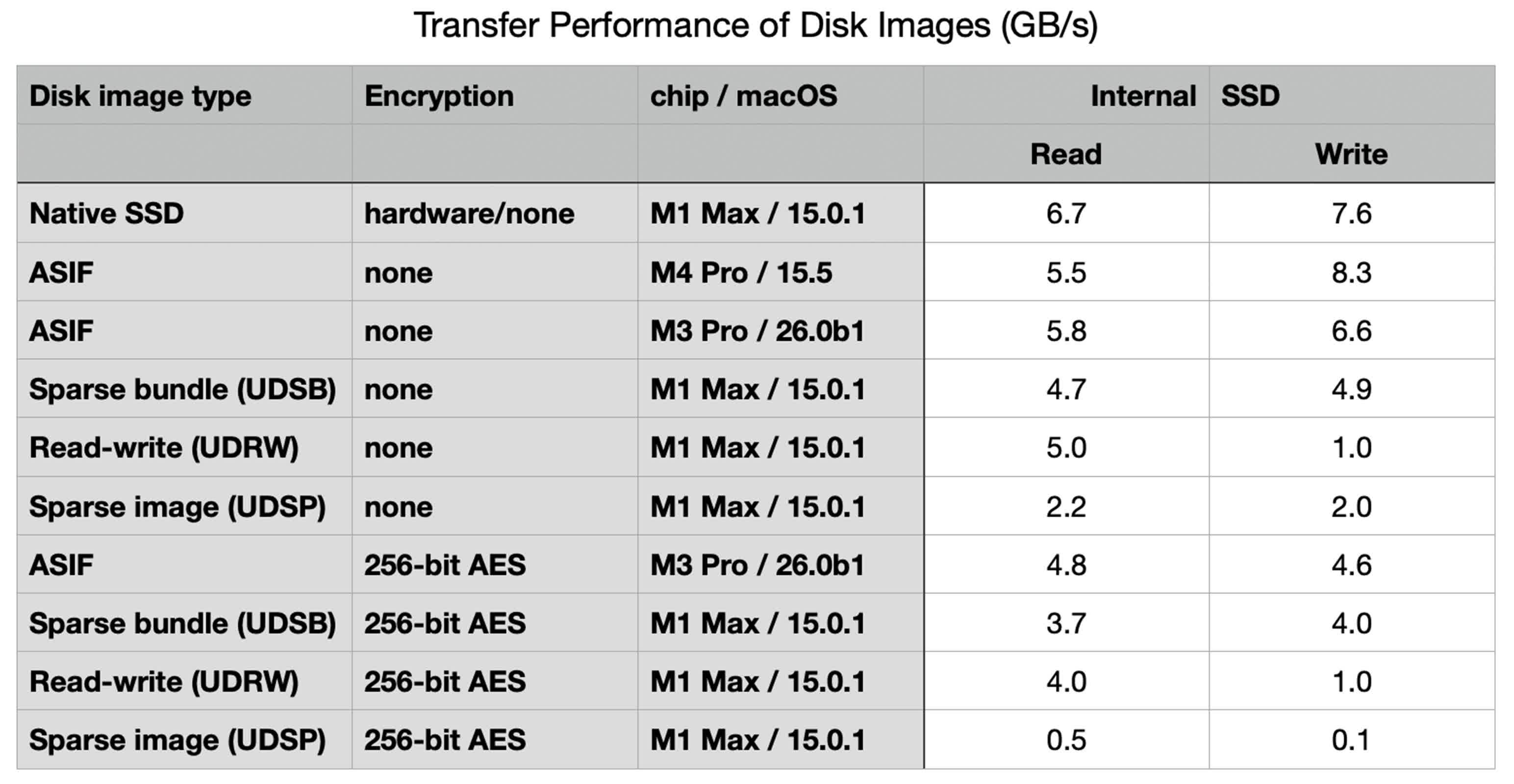What just happened? Apple's latest update for Macs, macOS 26 Tahoe, introduces a significant leap forward in disk image technology with the debut of the ASIF format – a development that could reshape how users and developers handle virtual storage on Apple silicon Macs.
For years, disk images have been a staple for Mac users, enabling everything from encrypted file storage to virtual machine management. However, these images have long suffered from sluggish performance, especially when encryption is involved. Even on Apple's fastest internal SSDs, traditional encrypted sparse images (UDSP) sometimes crawl along at speeds reminiscent of outdated hard drives, rarely exceeding 100 MB/s.
The new ASIF disk image format, now available in macOS 26 Tahoe, promises to change that. Early testing reveals that ASIF images can deliver read and write speeds that approach the raw performance of a Mac's internal SSD – an unprecedented jump for virtual storage. In one benchmark, a 100 GB ASIF image running on a MacBook Pro M3 Pro managed unencrypted APFS transfer rates of 5.8 GB/s for reading and 6.6 GB/s for writing.
Even with encryption enabled, speeds remained impressive, only dipping to 4.8 GB/s and 4.6 GB/s, respectively. Comparable results were observed on a Mac mini M4 Pro running macOS 15.5, where write speeds soared as high as 8.3 GB/s.
Apple has shared few specifics about the underlying mechanics of ASIF, but what is clear is that the format is designed to be independent of the host file system's capabilities. ASIF images are flagged as sparse files in APFS, meaning their physical size on disk grows only as data is added. For example, a newly created 100 GB ASIF image might initially occupy less than 1 GB of actual disk space. Even after heavy use and the addition of extra volumes, the image's footprint typically remains under 3.2 GB when emptied.
Currently, creating ASIF disk images requires either the Disk Utility app or the diskutil command-line tool in macOS 26. The process is straightforward for those comfortable with command-line operations, but support is not yet available in earlier versions of macOS, nor is it integrated into the more commonly used hdiutil tool.
Apple has not yet clarified which previous macOS versions will be able to mount and use ASIF images, raising questions about compatibility for users working across different systems.
The performance improvements offered by ASIF are especially relevant for virtualization. Apple recommends that virtual machines transition from the older RAW (UDIF read-write) disk images to ASIF, citing not only the speed boost but also increased efficiency when transferring VM files between hosts or disks.
Unlike sparse bundles, which have traditionally offered the best performance among disk image types, ASIF images consolidate all data into a single file, simplifying management and further enhancing speed.
Despite these advantages, the new format is not without limitations. Currently, only macOS Tahoe supports the creation of ASIF images, and the process relies on command-line tools rather than a dedicated API. This means that third-party apps and virtualizers will need to adapt in order for users to fully benefit from the new format's potential.
As the Mac community awaits broader support and more detailed technical documentation from Apple, developers are already eyeing the possibilities. Tools like C-Command's DropDMG are expected to add ASIF compatibility soon, paving the way for easier adoption.
Image Credit: Eclectic Light

